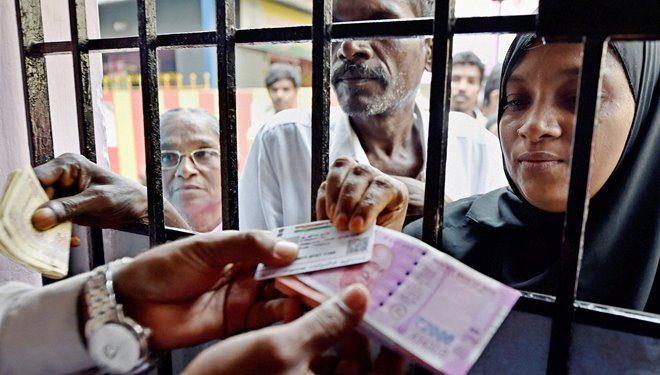Informed opinion stands out — as against the daily grind of accusations and counter-accusations. Word has come from widely respected former RBI governor Raghuram Rajan that the national economy suffered immensely due to two major steps of the Union Government, namely Demonetisation and GST implementation. Not that this is a revelation; the nation knew as much. But Rajan’s words carry added weight and further affirmation. Clearly, there should be embarrassment for Prime Minister Narendra Modi — and this curiously is the scenario at a time when countdown for the next Lok Sabha polls has just about begun.
Rajan made his observations at a university lecture series on India at University of California. His take was also that, as a result of these two controversial steps, India saw its economic growth slowing. This, at the precise time when the global economy is on the ascendant. India, he noted, grew faster till 2016, before being hit by the two “headwinds” unleashed by the Modi government. He has also stressed that the present 7 per cent growth rate was the minimum for India to stand its ground. His view on the mounting Non-Performing Assets (NPAs or unrecovered loans) is also notable — “Clean up” the banking system and “deal with the bad things”. Notably, the Modi government has dragged its feet on both these counts.
It is well established that Demonetisation was a negative step resorted to by the Prime Minister in a huff, without due planning, and without being mindful of its likely consequences. Economic activity came to a virtual standstill following the mess unleashed by the scrapping of high-denomination currency notes and utter failure on the part of the government to immediately refill the unnaturally created void with new notes. It was not just the business and trade that took a hit but also every individual household across the board. Economic activity suffered immensely even as the PM and his government kept projecting a brave front.
The principal claims of the Modi government were that the step was required to rein in the twin evils of black money and counterfeit currency notes. Let us keep the other frills such as stopping of funding to the extremists such as Naxals and also the terror outfits across the border which were bravely claimed. As it turned out, almost the entire lot of banned currency in circulation returned to the RBI through banks, meaning it was time for black money to turn white in dubious ways. The government found its aim was defeated, but instead argued that the entire currency in circulation was now part of the formal economy; and that what was black money would now be taxable money. The reality is, absolutely no ‘black’ money came into the formal economy. Cash in the shape of old currency notes simply got exchanged into the new notes albeit with a percentage of loss. For instance, a 1,000-rupee note was exchanged for 700 or 800 rupees for the original owner. The 20-30 per cent loss that was borne by the original owner of the currency was usurped partly by bankers and partly by middlemen who facilitated the exchange. In other words, the total amount of cash held prior to DeMon remained in the same form but a small portion was taken away by unscrupulous elements. These elements formed into gangs and started operating across the length and breadth of this vast country within 72 hours after the announcement of annulment of old currency notes by PM Modi on Tuesday, 08 Nov 2016.
The government’s decision to extend the deadline repeatedly for months for return of old notes to banks and to RBI meant it kept the door open to manipulations of many kinds. Even now, rackets are operating in collection of old notes for a consideration. This displayed the seriousness of the government in implementing a step that will have a major bearing on the economy. It also turned out that the impact of Demonetisation on counterfeit currency was negligible.
So also with GST. What was meant to usher in a unified taxation system styled as “one nation, one tax” is riddled with several loopholes and systemic flaws even after so many months of operation. It is not yet time to say India has adapted well to the reform measure. Like in the case of Demonetisation, not enough thought had gone into the implementation of GST, with a finance minister and the PM being clueless in matters of economy. Nothing yet shows the markets have absorbed the shock. Things are topsy-turvy in several related respects. It has been a slow grind. The country is in a bad spell.







































